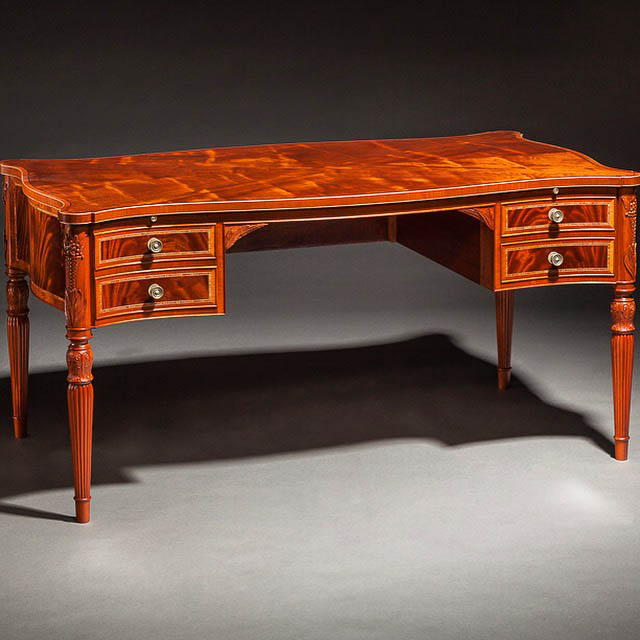
Jeffrey S. Roberts recently received the 2017 Cartouche award from the Society of American Period Furniture Makers. It’s an award that is given annually to someone who has demonstrated over a lifetime their love for American period furniture, shown a mastery of the skills and techniques, and demonstrated devotion to advancing the craft and a willingness to help others learn.
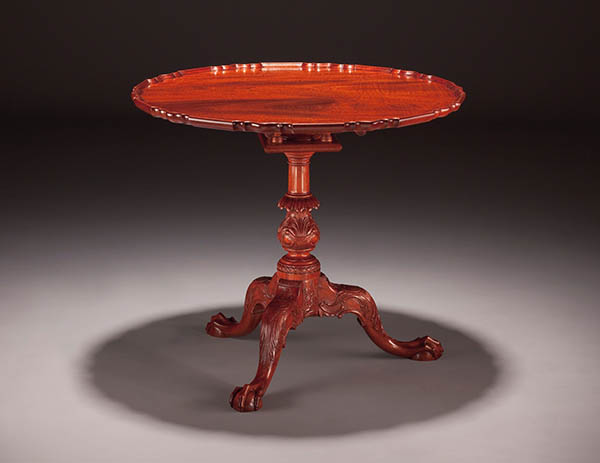
Ironically, Jeff didn’t know he would end up in woodworking at all. He had taken shop class in his freshman year of high school, as all the boys in the class were required to do, but “didn’t really have any interest in it.” He also, however, “hated school and knew I wasn’t going to college. I knew I’d be doing something working with my hands.”
A tour at the North Bennet Street School in Boston, Massachusetts at age 18 set him on the woodworking path. That tour, at the school with its focus on hands-on training in traditional trades and craftsmanship, “blew me away,” Jeff said.
The year-and-a-half-long course he undertook at age 18 continues to have an influence on his work today, as Jeff is best known for his traditional style of work. It’s also where he first experienced carving. As soon as he tried it, he said, “I knew this was going to be part of my furniture making.”
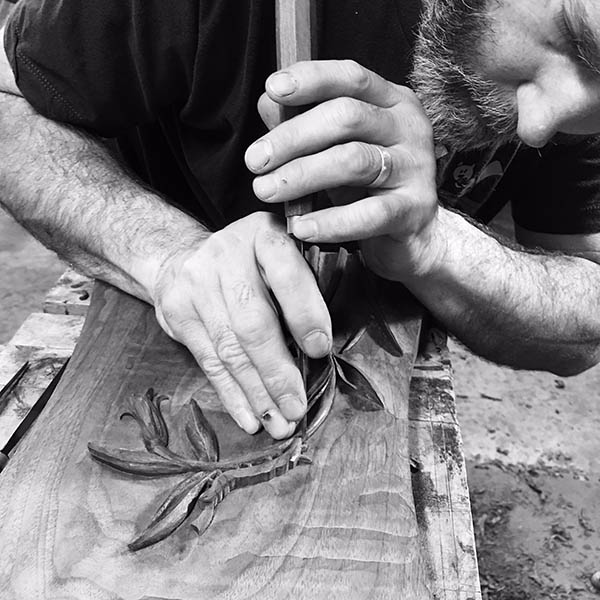
That interest in carving, in turn, influences the woods that Jeff works with. “Because I do a lot of carving, I do enjoy mahogany,” he explained, noting that it carves nicely and that tools go through the straight-grained wood with a minimal amount of effort. He also appreciates walnut, noting, “I love the natural tone of it. It’s also nice to carve, and will hold a shape well.”
“It’s fun to work with different woods, too,” Jeff added. “I don’t think it would be as exciting if it was always the same.” For instance, “if you get good crotch or flame mahogany veneer, that stuff is a blast when you start finishing it. The grain pops out, and it’s amazing.”
Jeff has the same kind of attitude toward furniture styles: “There’s some awesome new stuff, but the traditional stuff can’t be beat. I don’t think we ever really match what they did back then.”
By “back then,” he means the 18th century when, according to Jeff, “furniture designs were really evolved. They got the lines and proportions just right. His favorite of the 18th century designs is the Newport style (find more information in this article) – again, Jeff cites the proportions and lines as the key elements for him.
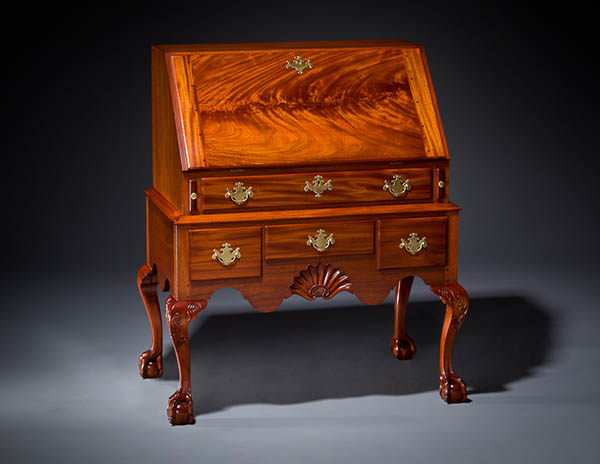
Much of Jeff’s work has been in this kind of traditional style, and he doesn’t shy away from larger, more complex pieces. “I like it when I really have to think, when it gets complex, because your head has to really be in it,” he said.
He particularly enjoys the challenges that come with building chairs, which he describes as a sculptural project. “They have to look good from any side, from any angle, because you’re looking at the back as much as the front. There’s a lot of curves, a lot of spaces in between splats – you have to get the splats right.”
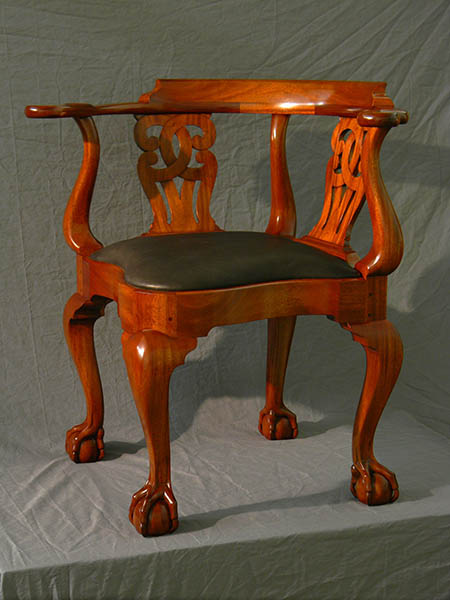
Overall, with his projects over the years, “I’ve been in some good learning situations,” Jeff said. For instance, when he attended North Bennet Street School, students were not allowed to use a router. Afterward, when he spent a brief time working for others in shops in Boston, he learned to use a router and make router fixtures. He has taken those skills with him over the years: “I learned to work quicker and more efficiently, without sacrificing anything in quality in the end piece,” as well as the skills to keep learning. “When you work for yourself, you kind of have to figure out everything,” he said.
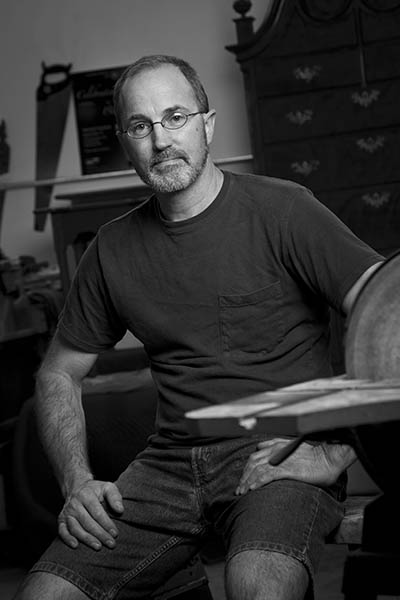
One tool Jeff uses to help in figuring things out is meditation. He was originally introduced to the practice early in his self-employment years, when he was working out of a shop in his mother’s basement. “She was into meditation,” and had several books on the subject. “It just made sense to me,” Jeff said. “I got into it and started meditating a lot and read those books.”
Although he drifted away from the practice for a number of years, Jeff said he’s now back to meditating regularly. “The idea is to focus on your breath. It brings you to a place in your mind where you pay more attention to whatever comes up. You can develop a little bit better concentration and focus.”
What that means for his woodworking is that the concentration helps him to work through problems on a project. Plus, “it clears your mind a little bit, and makes room for what you want to be there.” Using the visualizing aspect of meditation, Jeff said, helps him see things in his head, such as seeing through to the next step of a project, without needing to work it all out on paper.
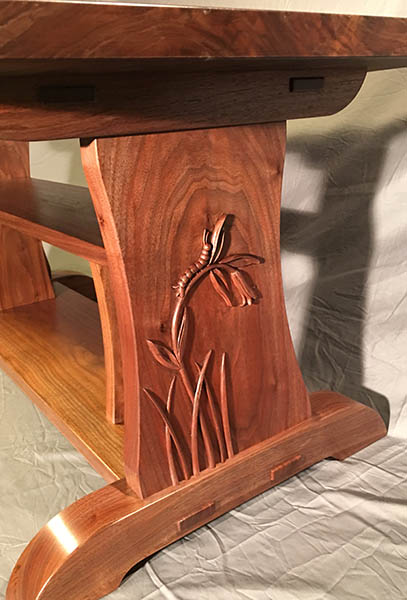
He can apply this problem-solving both to his traditionally styled pieces – the body of work that led to his recognition with the Cartouche Award – and to the newer style he’s also introducing, a more art furniture/contemporary approach, titled “Through the Forest, Lightly,” that features carvings of nature scenes.
“It’s fun for me,” Jeff said. “I consider myself lucky because I do enjoy my work” – even if woodworking wasn’t even on his original radar. “Sometimes, I think of it as a lucky choice,” he said.





